Are cheap binoculars a waste of money?
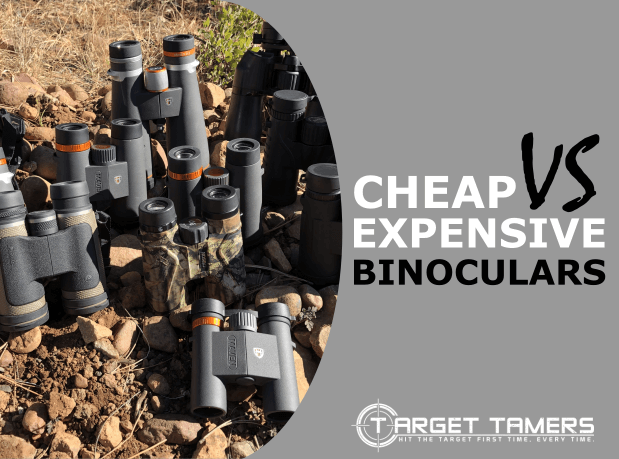
Why do expensive binoculars cost so much, and are they worth it?
Binoculars generally look the same from one model to the next, but there are multiple factors involved that determine the final cost. From manufacturing to mechanical integrity and glass quality, there are legitimate reasons why some are more expensive than others.
In this guide, I refer to cheap binoculars as those less than $100. While premium binoculars can cost thousands of dollars, we’ll draw the line at $1000.
Learn how to tell the differences between cheap versus expensive binoculars and make a well-informed decision the next time around.
10 Key Differences Between Cheap & Expensive Binoculars
1. Manufacturing
Where and how binoculars are made has a great deal to do with quality. There are facilities that manufacture optics with cheap labor, inferior materials, and a lot of automation with minimal quality control.
Cheap and more affordable binoculars are likely manufactured in China. There are some facilities in China that build binoculars to manufacturer specs, and they may be the difference between cheap versus what is worth your money.
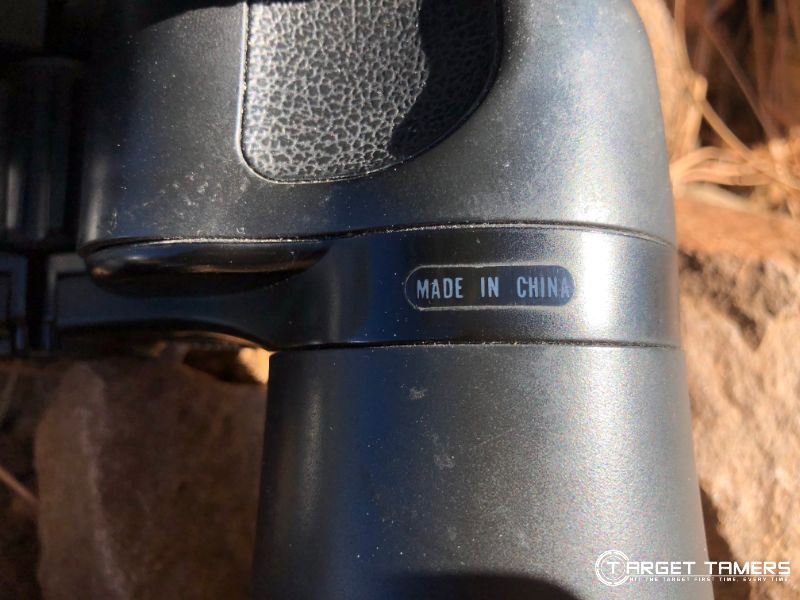
However, with the majority of non-brand and generic labels on binoculars that are around $30-$100, they are usually the result of mass-produced generic parts.
High-end manufacturers often have their own manufacturing facilities and well-known locations include the United States, Europe, and Japan. These facilities under employment from the manufacturer incorporate expert craftsmanship from conception to final production and throughout quality control procedures.
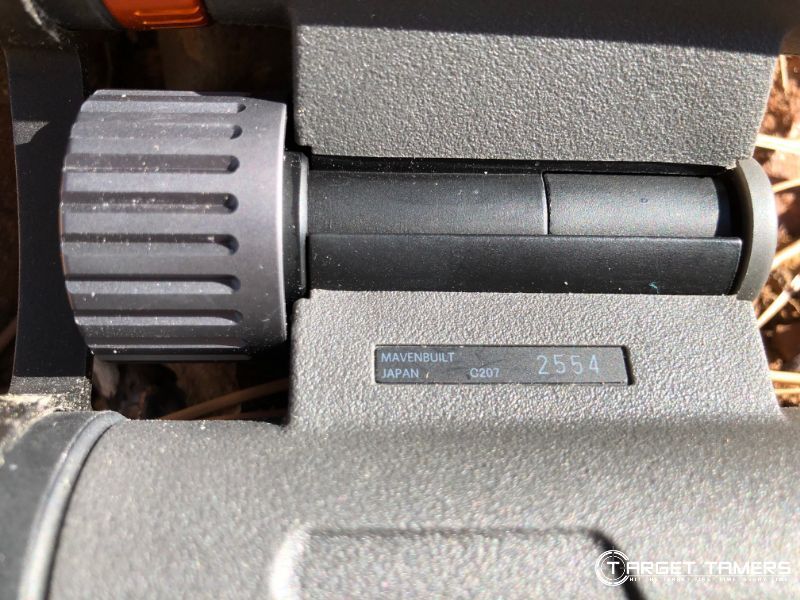
Specialized equipment, hands-on technicians, automated precision machines, and high-quality materials are examples of various production methods and procedures often seen in the manufacturing of premium binoculars.
In all, the labor, materials, and manufacturing of expensive binoculars are exactly why premium binoculars are expensive.
The Verdict:
- Cheap Binoculars – Less manufacturing costs involved, and cheaper materials used.
- Expensive Binoculars – More manufacturing costs involved due to material grade, expert labor, custom specs, and use of precision equipment.
2. Build Quality
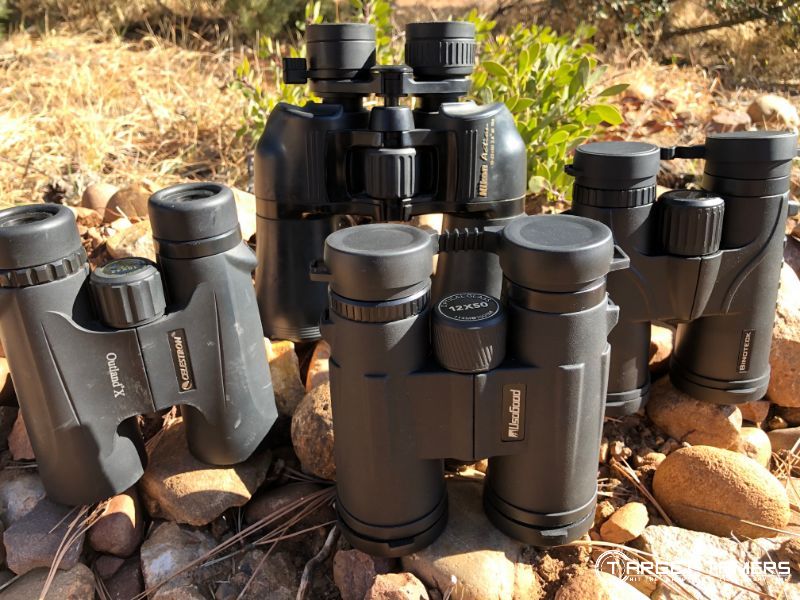
In general, the build quality of a binocular is only as good as the materials used. Various materials are used to construct binoculars with aluminum as the most common metal for the housing. It’s reliable and seen in entry-level binoculars to high-end binoculars.
The most premium binoculars are made with magnesium as it’s very lightweight and durable. However, it’s more expensive to use. As its usually combined with another metal, it explains why you may see it appropriately labeled as a magnesium alloy in binocular specs.
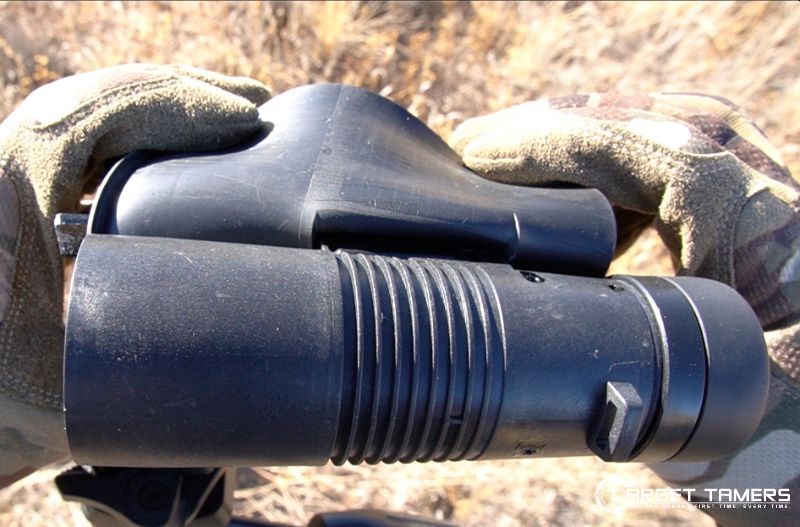
Most budget binoculars will not use metal for the housing. Some form of plastic or polymer composites will be used because they’re inexpensive, extremely strong and lightweight, widely available, and easy to work with in manufacturing.
Polymer can be a reliable material if manufacturing procedures and quality materials are incorporated. More often than not, plastic is usually combined with inferior workmanship and binoculars are susceptible to breaking easily.
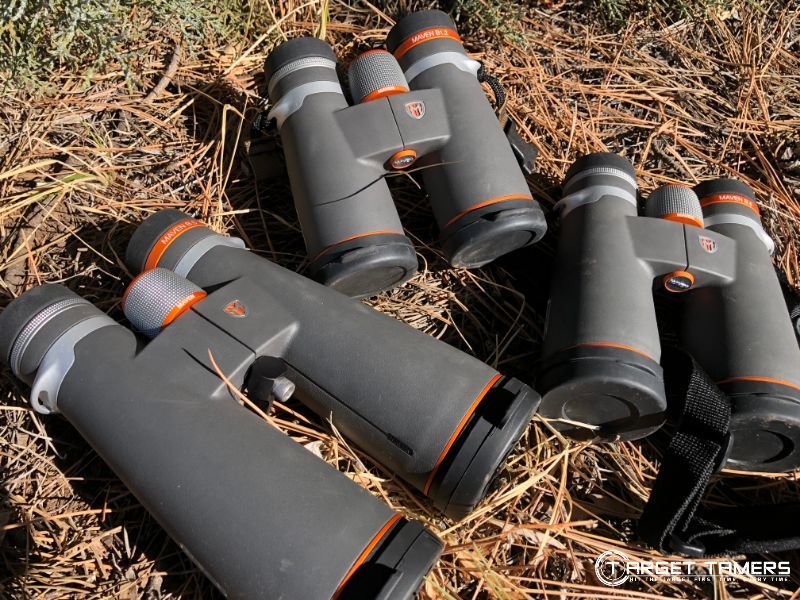
The Verdict:
- Cheap Binoculars – Plastic or aluminum housing. Overall build quality is poor to fair.
- Expensive Binoculars – Aluminum and magnesium metals improve build quality and consequently binocular longevity.
3. Mechanical Integrity
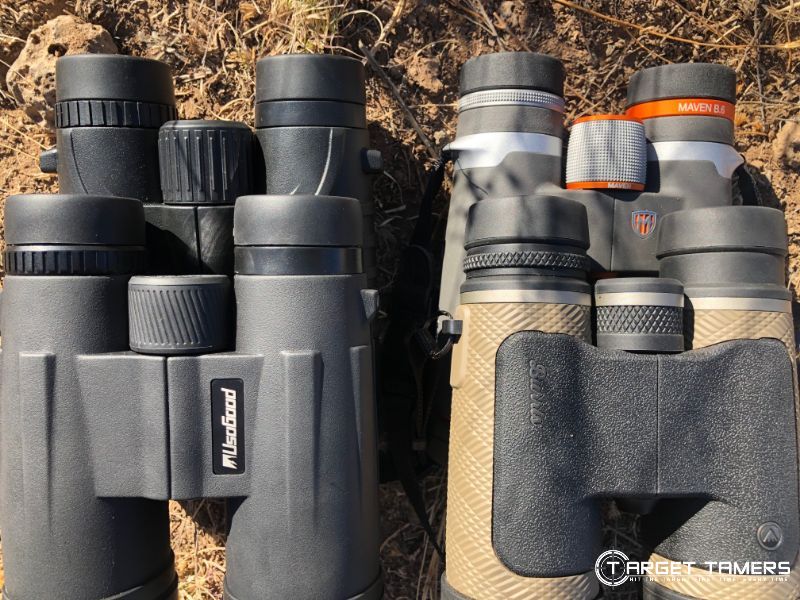
Mechanical performance is largely related to the moving components of the binocular. This includes the quality of the material used and the construction and assembly of key features such as eyecups, focus knobs, bridges and hinges, and adjustable diopters.
Having a metal chassis is one thing, but plastic moving parts will make mechanical performance the weak point.
Cheap binoculars have a higher rate of quality control issues. Most binocular complaints are related to mechanical performance problems. Many will be forgiving and tolerant of less than perfect optical performance, but if the eyecups give way under slight pressure or if collimation can’t be achieved, it makes the binocular difficult to use at best and unusable in worst case scenarios.
Premium binoculars will have metal on metal combinations, i.e., metal housing with metal moving parts. Expecting mechanical integrity is for the most part guaranteed with binoculars that cost more.
Examples of quality mechanical performance includes:
- Focus knob: Free of stiff or sloppy play, smooth movement
- Eyecups: Multi-position, stay in position under pressure
- Diopter: Adjustable for sharp focus for your vision
- Collimation: Achievable at any point along the IPD (interpupillary distance)
The Verdict:
- Cheap Binoculars – Fair with some repeatable performance. Moving components may be limited in adjustment.
- Expensive Binoculars – Precise and consistent performance with higher expectation of mechanical integrity.
4. Rubber Armor

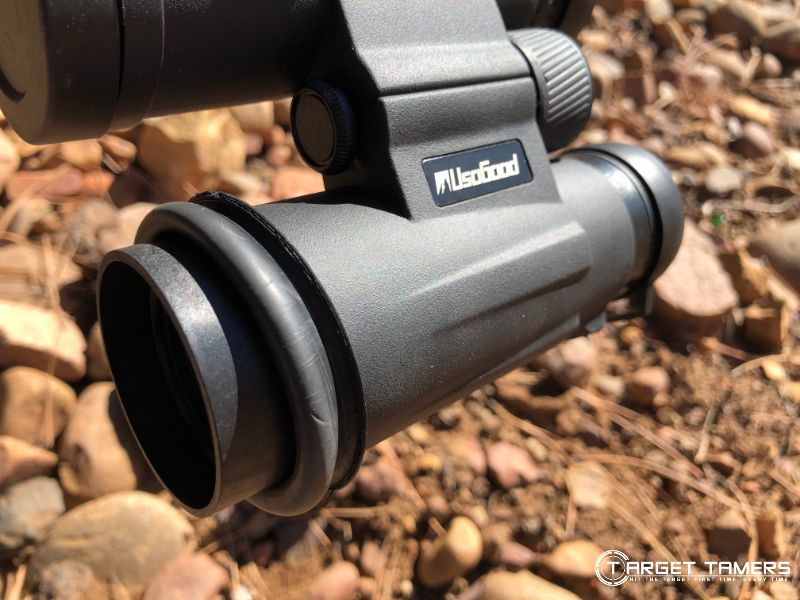
The rubber armor is the exterior material that acts as a shield to the binocular housing. It is part of the aesthetic appeal that can be customized to sport various pattern or color options. Functionally, it’s textured and dense to improve resistance to scratches, shock, and the elements.
Low budget binoculars may completely lack a rubber armor. This is one indication that it is not weatherproof and should be handled with care. Since armoring differs between manufacturers, you will see a variety of customization options and brand-specific colors and/or patterns.
The best cheap binoculars will have rubber armor, but they can be thin, barely textured, perhaps easy to damage, or it does not completely cover the binocular. This can also make it difficult to grip the binocular in wet conditions or with use of gloves.
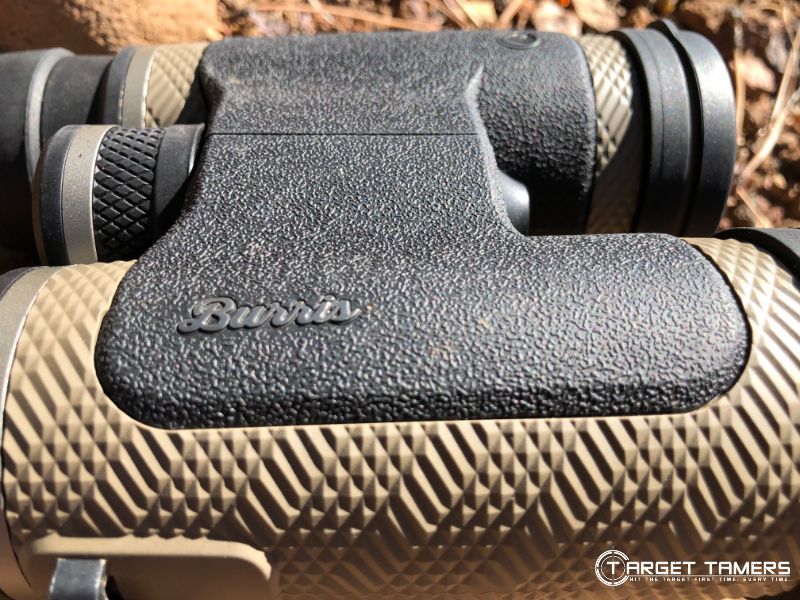
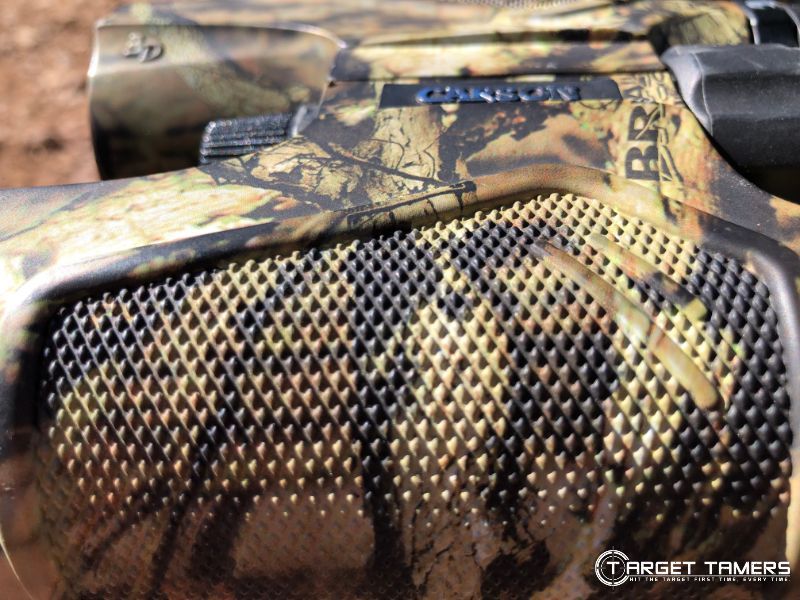
Because the of increased expenses of premium binocular manufacturing, you should expect a grippy texture and a dense rubber coat. It should be durable and hold up to exposure in the elements. The overall better quality will also provide improved protection from scratches, accidental abuse, and should be easy to keep clean.
The Verdict:
- Cheap Binoculars – May be thin or incomplete around the binocular body and is likely to wear faster over time.
- Expensive Binoculars – Thick, dense, and provides better protection as it covers the entirety of the binocular body.
5. Weatherproofing
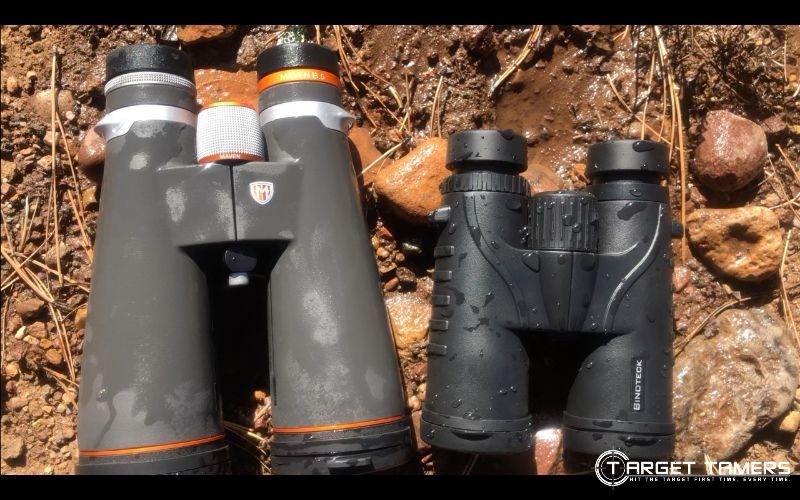
Binoculars should be outfitted to provide some sort of weather-resistant benefits. The waterproof rating is a fast measure of expected durability in adverse conditions. This can be important for hunters and backpackers that are glassing in conditions that can’t be avoided or must be endured.
With advancements in weatherproofing technology, even the cheapest binoculars are at least water-resistant. This should be a base expectation of budget binoculars. However, you can find $100 waterproof binoculars that are also fogproof, so perhaps that should be the base standard.
How do you know if binoculars are waterproof or fogproof?
The manufacturer should state this in the specs. Typically, its waterproof or submersion rating will be listed along with the type of dry gas used. If these are not mentioned, it is likely lacking fully waterproof and fogproof protection.
The physical components that provide a sealed barrier against moisture, dust, and bacteria are the O-ring seals. Additionally, purging the optical chambers with nitrogen or argon gas will also keep the inside lenses free of condensation.
Hunters and outdoorsmen will demand waterproof and fogproof binoculars for those excursions when extreme temperature changes occur or when exposure to the elements is inevitable. Since you’re outside, it’s all the time!
The Verdict:
- Cheap Binoculars – Most are water-resistant, but the best of the cheap category will be nitrogen-purged and waterproof.
- Expensive Binoculars – Nitrogen or Argon gas is used, and binoculars are typically submersion rated for depths of 1 m for at least five minutes.
6. Glass Quality
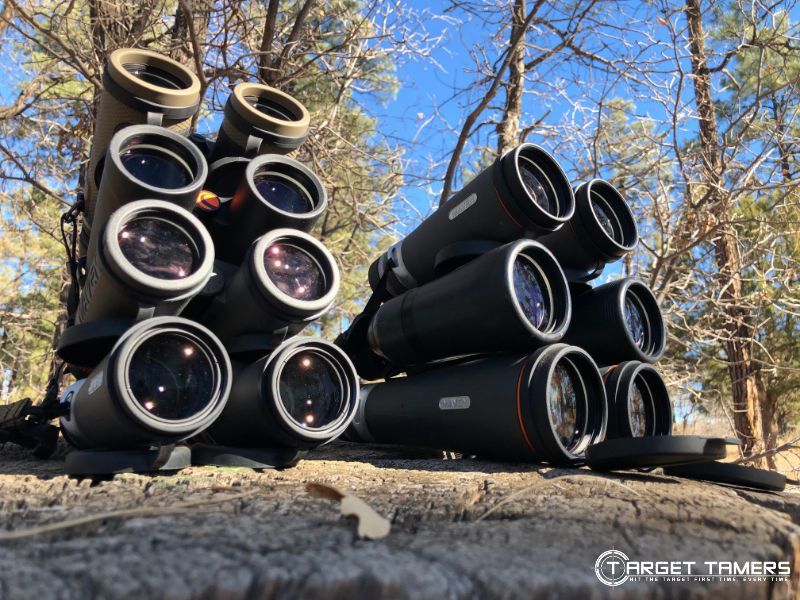
The image quality as seen through a binocular is partly a subjective experience due to having unique vision. However, the glass and coatings used to construct the prisms and the lenses are primarily responsible for how well you can see that image and thus judge poor to excellent optical performance.
Manufacturers typically do not name their glass sources nor their methods or formulas to how the prisms, lenses, and coatings are made. This explains why significant differences are experienced when using binoculars from different brands and when comparing cheap binoculars versus expensive ones.
Cheap binoculars do not undergo the strict and precision processing to work out imperfections nor do they have the additional ‘ingredients’ that expensive binoculars have. This does affect overall performance, and cheap binoculars are optically inferior versus expensive ones.
Examples of some glass processes that vary significantly within the manufacturing process:
- Glass source i.e., Japan, Germany, China
- Glass type i.e., BK7, BaK-4
- Processes i.e., grinding, polishing
- Use of additional glass constituents i.e., ED, fluorite
- Lens assembly i.e., number of lenses, groups, placement
- Prism type i.e., roof or Porro
The Verdict:
- Cheap Binoculars – Fair optical performance but may have imperfections that affect overall result with optical aberrations.
- Expensive Binoculars – Extensive manufacturing and glass additives improve optical performance with minimal, visible aberrations.
7. Optics Coating Quality
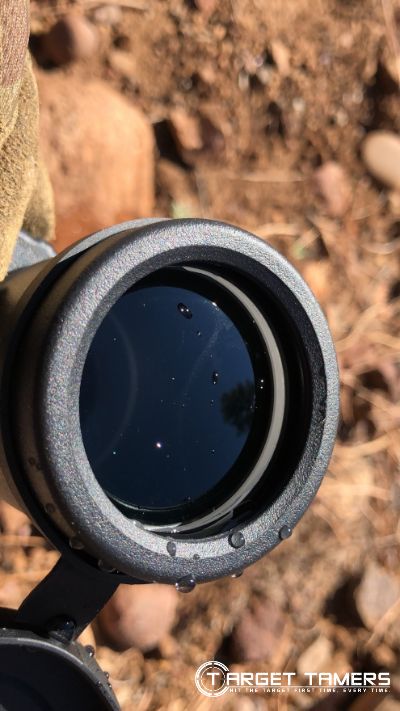
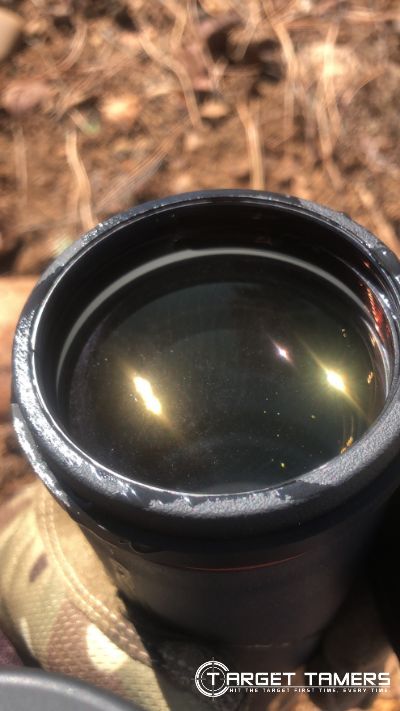
Coatings are an essential part of the optical system. They can also vary in type from exterior lens protection to specialized prism coatings. There is no real way to measure quality as there is no industry standard. As a result, manufacturers do not disclose their formulas and other information as it relates to application.
What we do know are that key materials are used to make some of the best metal and anti-reflective coatings that improve light transmission and reduce optical aberrations. For example, specialized phase correction prism coatings are reserved for roof prism binoculars to ensure all prism surfaces are reflective to complete the optical path. While aluminum and silver are highly effective, dielectric is considered the best.
We can also judge its performance during field use. Not all binoculars have an exterior lens coating. This is a hydroponic coating that is applied to the outside of the objective lenses and helps to bead water to keep your view free and clear of rain drops, sleet, and snow. Typically, this is a feature reserved for mid-range to premium binoculars though you may see it on occasion on the some cheap binoculars.
Examples of primary coating features.
- Air-to-glass coatings i.e., Coated, Fully Coated, Multi-coated, Fully Multi-Coated
- Exterior lens coating to protect against scratches, dirt, water, etc.
- Roof prism coatings i.e., Aluminum, Silver, Dielectric
Inexpensive binoculars with cheap glass and imperfections combined with low quality coatings, if they have them at all, will result in an inferior glassing experience. The glass is likely easy to scratch, may distort colors, and are not as sharp or bright to look through. Eye fatigue is likely to be experienced and will limit your time at the eyepiece.
Quality-made binoculars are expensive because of the combination of glass and coatings. High-grade coatings require quality materials and precision application. The result should be discernable resolution in adverse light conditions, high contrast, sharpness, and brightness, and significantly less visible aberrations. The objective lenses should also be well protected and keep your view clear even in rain or snow.
The Verdict:
- Cheap Binoculars – Fair optical performance but can experience eye strain. May not know the difference if you haven’t looked through better binoculars.
- Expensive Binoculars – Expect significantly bright and sharp binoculars with the ability to glass longer without fatigue.
8. Prism Type
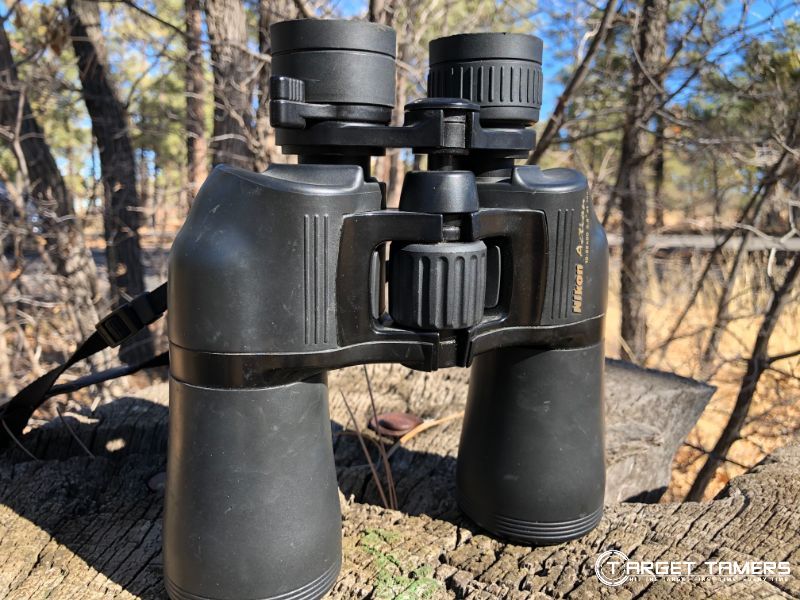
There are two primary types of binocular prisms, Porro and roof prisms. Porro prism binoculars are easily identifiable by their offset eyepieces to objective lenses. Roof prism binoculars have an outward appearance of in-line eyepieces to objective lenses.
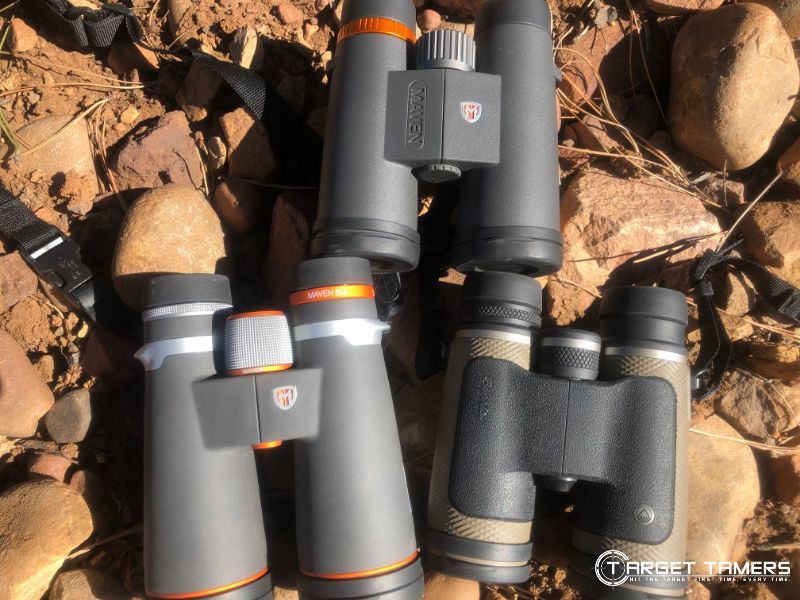
Roof prism binoculars have overtaken the market as a common type of binocular. They were more expensive than Porro prism binoculars due to compactness, waterproofing, and specialized coatings as a result of the prism design.
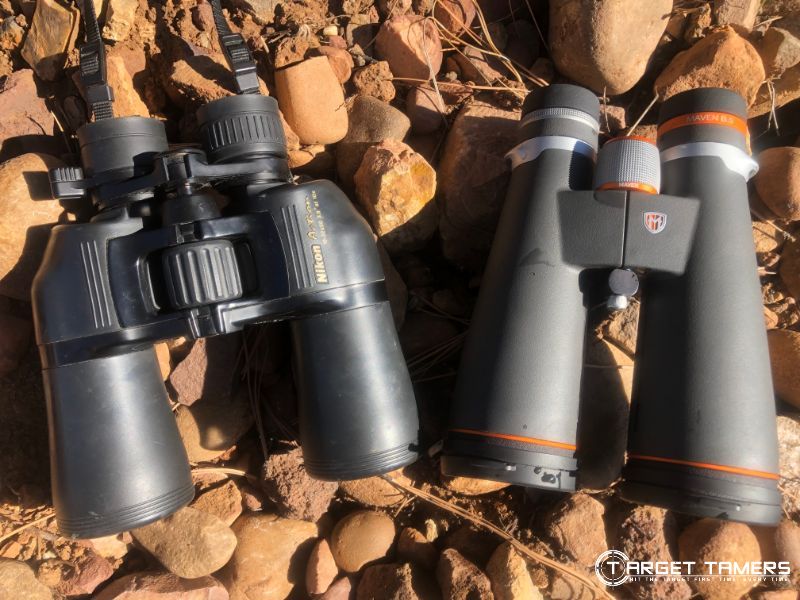
However, the roof prism binocular inherently lacks fully reflective surfaces and requires specialized coatings. From the advancements in technology today, they can be made to be just as optically high performing as a Porro.
Unfortunately, the cheapest roof prism binoculars often lack prism coatings. If this is the case and the budget is tight, the Porro prism binocular would be the only sound recommendation.
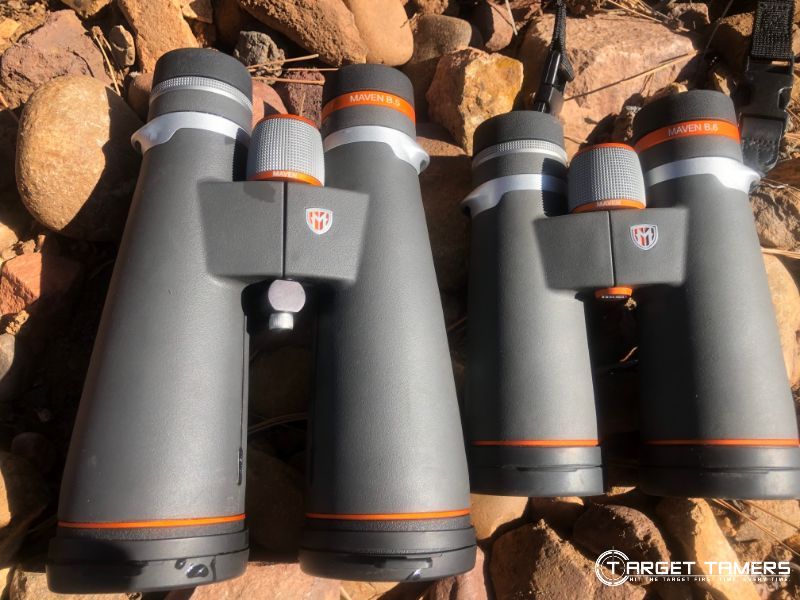
Further up the line in the mid-range to high-end market, you can see more complex roof and Porro prism designs such as the Schmidt-Pechan (SP) and Abbe-Koenig (AK) prisms. AK prisms are complex and expensive to make, so they are usually only seen on premium binoculars.
The Verdict:
- Cheap Binoculars – Best to choose a Porro prism binocular over a roof prism if it lacks specialized prism coatings.
- Expensive Binoculars – The most expensive roof or SP prism binoculars phase-correction prism coatings. AK prisms do not need these specialized coatings and are considered premium options.
9. Binocular Features
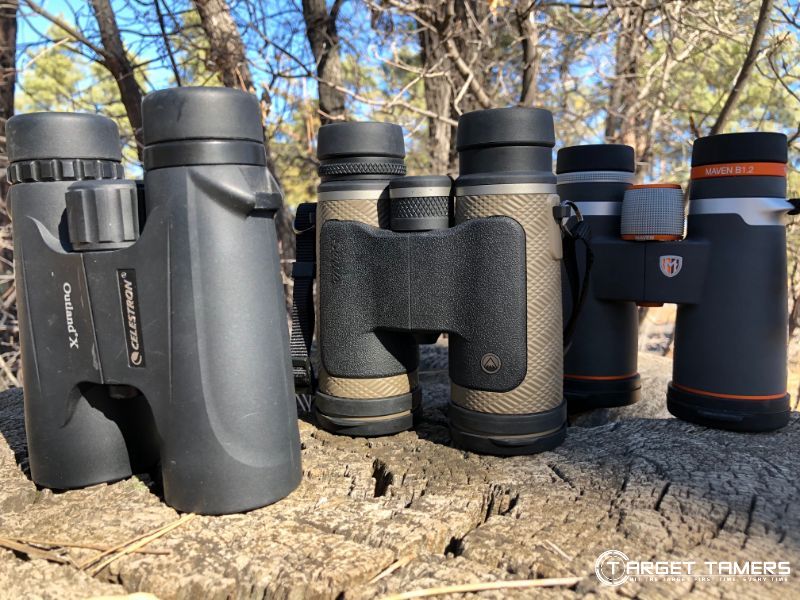
Binocular features can affect the final cost of a binocular. Features can range from adjustable eyecups to long eye relief comfort and high-definition optical quality. Specialty features such as a rangefinding engine or night vision will significantly impact price point.
Cheap binoculars will have the basics in order to provide functional performance. While it may seem like it has all the necessities, how effectively it works, how durable it is, and its range of adjustment will be limited.
High-end binoculars will build on what is available in the mid-range market. For example, while you may see ED glass in a $500 binocular, you should be seeing the addition of fluorite when spending well over $1000.
Premium binocular features to consider.
- Solid, multi-position eyecups
- Metal moving parts
- ED to fluorite glass
- High transmission coatings
- Magnesium housing
- Locking diopter
- Quality packaging & accessories
Specialty features are usually only seen on premium binoculars and include built-in rangefinding, on-board applied ballistics, night vision, thermal imaging, and more.
The Verdict:
- Cheap Binoculars – Fair performance of basic features for recreational use.
- Expensive Binoculars – Have significant optical and build quality upgrades and/or addition of binocular and specialty features that cost more.
10. Value
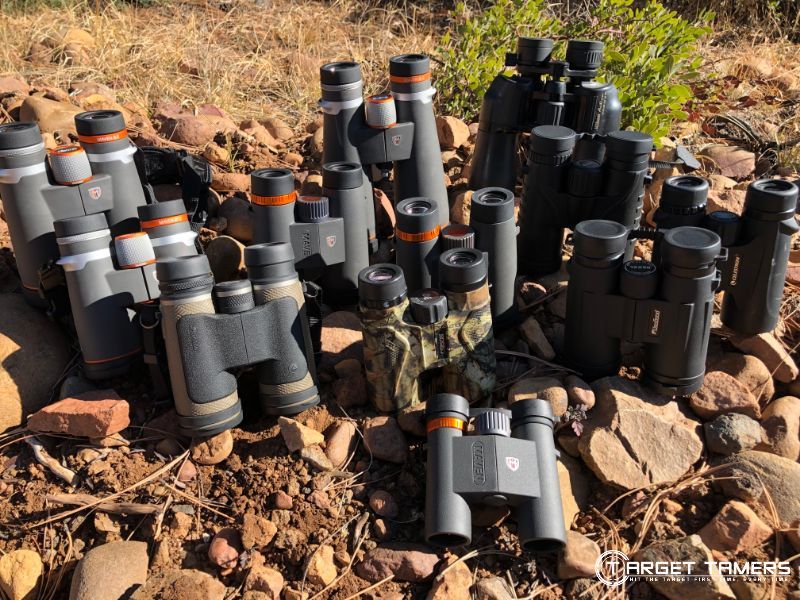
Judging value is a subjective viewpoint but can be measurable if one knows enough about binoculars to make an informed decision. While there are general guidelines to help make productive comparisons, there are always the exceptions that prove to be a great buy regardless of price point.
Spending cheaply may mean that you get something cheap in return. It does not always equate to getting good value. Conversely, spending more doesn’t guarantee that a binocular will not fail to meet your expectations. It may be no different to a cheap pair in how you feel about its value. To get the best binoculars for the money, compare them within similar budgets.
Value is less about how much you spend but rather how much you get in return that is more than the expectation against other binoculars within its price range.
Brands like Swarovski and Leica are best known for their top-shelf, quality-made binoculars. But prices are rarely affordable to the average buyer and it’s not entirely due to binocular quality and features. In fact, you are in part paying to own a “brand-name” optic. With that comes the privilege of bragging rights and exceptional binocular performance, but you must pay for every bit of it.
There are brands such as Vortex, Leupold, Burris, Maven, Steiner and more that offer binoculars from the entry-level category right up to high-quality options that can cost just as much as buying from Zeiss or Swarovski. They offer a lot of features ‘for the money’ and are why they are extremely popular manufacturers among beginners to optics snobs alike.
It should be clear that it’s not about the final cost but more about what you can find that offers more for a similar or better price.
The Verdict:
- Cheap Binoculars – Between $150 to $300 is a fair price point to find plenty of binoculars with good value.
- Expensive Binoculars – Margins become tighter to measure value because performance and quality may only differ by a small extent. However, $1000 for almost-as-good-as $2500 performance can be considered value and a worthwhile buy. This type of quality and performance compromise must be weighed against needs and applications.
Cheap VS Expensive Binoculars: The Verdict
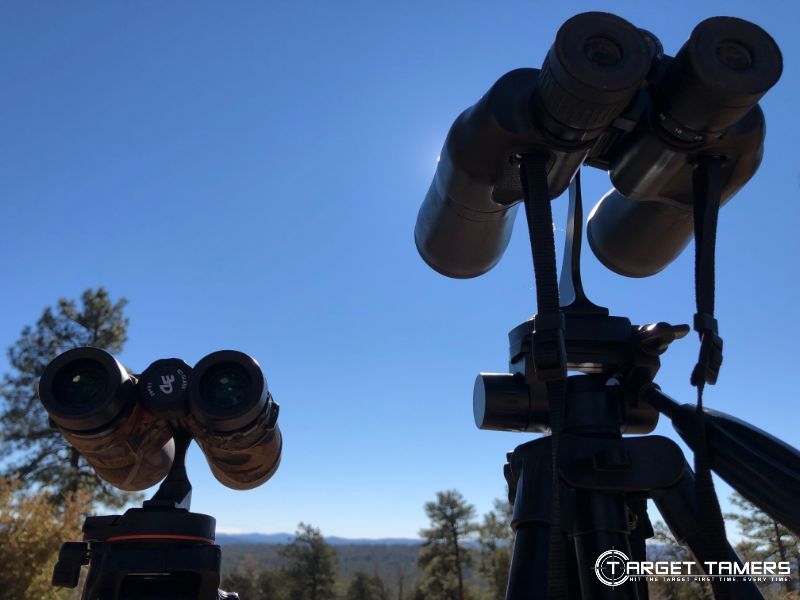
While there are measurable differences between cheap and expensive binoculars, the cost differences may not be worth it to the recreational user. Avid outdoorsmen and professional applications may justify the increase in cost for the upgrade improvements.
There are numerous factors that inflate the costs of a binocular. Some are justified and others are not. Since no one binocular does it all, no one budget is the same, and everyone’s needs are different, the final verdict is yours to decide.
What has been decided is that cheap doesn’t always mean a waste of money and expensive doesn’t always mean value. But it is better to buy once and have long-lasting, high-performing binoculars suited to your needs than to buy several times over and learn the lesson the hard way.
Further Reading




